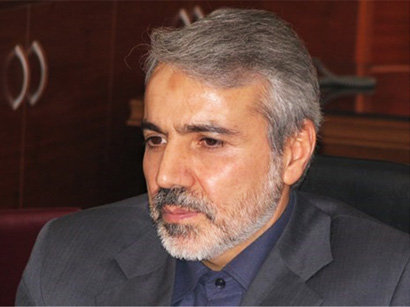Petchem, high-tech to oar Iran’s nonoil economy: Govt.

By Trend
The Iranian government is concentrating on two areas as the main propelling power behind the country’s non-oil economy, government spokesman Mohammad Baqer Nobakht said.
One of the areas is petrochemical industries in which Iran enjoys some degree of advantage for being an oil and gas producer, Nobakht told Trend in a press conference.
"Fifteen or 20 years ago we made some investment in the petrochemical sector, which now has the largest share in the country’s non-oil product," he pointed out, adding that there are still plans to further develop the petrochemical sector as a great source of income.
Iran produced 46.4 million tons of petrochemicals during the
last fiscal year (ended March 20), but for the current year, the
figure is planned to reach 54.7 million tons. The country’s actual
petrochemical output capacity is around 63 million tons per year.
Iran hopes to bring the capacity to 120 million tons by 2020 and
160 million tons by 2025.
"There are some industries such as the automotive, where we are far
behind developed countries," Nobakht noted, adding, "However, there
are some other fields such as high-tech in which we are not
behind."
"Therefore, high-tech, and in particular science-based industries, are the second area which we are considering as a suitable area for investment and development."
Iran’s Supreme Leader Ayatollah Ali Khamenei has called for the advancement of a knowledge-based economy, and in this vein, support for domestic high-tech firms. These companies have been benefiting from special tax exemptions, financial incentives and laws to ban imports of products whose equivalents have been produced domestically, among other measures.
Also, research and development investment in some fields became
highly profitable during the sanctions era.
In 2015, Secretary General of Iran Nanotechnology Initiative
Council (INIC) Saeed Sarkar said Iran ranked 7th in the world and
1st among the Islamic countries in scientific production and
nanotechnology, one of the most hotly pursued fields of science in
the country.
Besides nanotechnology, Iran is investing heavily in the domestic applications of nuclear technology, medicine, satellite, as well as some military-dominated areas of sci-tech such as drones and radars.
Nobakht said the government hopes by developing these two areas it will attain its objective of becoming a regional economic and technological hub.
Iran is projected to experience the largest growth in the contribution of the non-oil sector to its gross domestic product in the 2021 outlook.
The International Monetary Fund in a mid-October report predicted that the country’s non-oil share in GDP growth in the 2021 outlook will be greater than that of all other countries in the MENAP (Middle East, North Africa, Afghanistan and Pakistan) region.
This year Iran saw a huge rise in oil’s share of GDP growth. The country’s headline growth has been revised up to 4.5 percent this year, owing to faster-than-expected increases in oil production and exports following the unwinding of sanctions.
However, the government is intent upon using the opportunity to diversify its GDP composition as well in a bid to reduce its dependence on oil revenues.
---
Follow us on Twitter @AzerNewsAz
Here we are to serve you with news right now. It does not cost much, but worth your attention.
Choose to support open, independent, quality journalism and subscribe on a monthly basis.
By subscribing to our online newspaper, you can have full digital access to all news, analysis, and much more.
You can also follow AzerNEWS on Twitter @AzerNewsAz or Facebook @AzerNewsNewspaper
Thank you!
